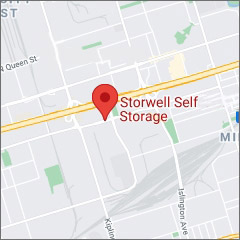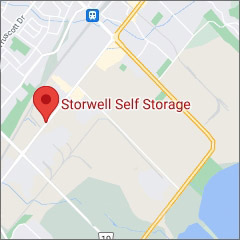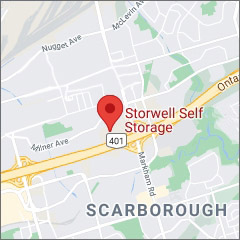A place for everything, and everything in its place.
A Totally-Not-Boring Blog About Storage
20 Best Self Storage Tips You Need to Know in 2025
Table of Contents
When it comes to renting a storage unit, organization is key to ensuring that your belongings are safe, accessible, and well-maintained. A disorganized storage unit can lead to wasted time, frustration, and, even worse, potential damage to your valuable items. Imagine the hassle of sifting through piles of boxes just to find one item or discovering that an improperly stacked piece of furniture has been damaged. These are all avoidable problems with a little foresight and effort.
In this guide, we’ll share 20 practical tips to help you pack and organize your storage unit effectively. Whether you’re storing items for a short period or long-term, these tips will help you maximize the space in your unit, ensure easy access, and keep everything in good condition.

1. Why Organizing Your Storage Unit Matter
Efficient Use of Space
One of the most important reasons to organize your storage unit is to make efficient use of the available space. By stacking items properly and using uniform-sized boxes, you can store more belongings without needing to rent a larger unit. This can save you money in the long run by avoiding the unnecessary expense of upgrading to a bigger unit.
Efficient use of space also makes it easier to store larger items like furniture while still having room for smaller items. When you pack with purpose, you’re able to optimize every square foot of the unit, which is especially important for those using smaller units or storing more delicate items.
Easy Access and Retrieval
A well-organized storage unit doesn’t just save space—it saves time. Have you ever needed something urgently, only to realize it’s buried in the back of your storage unit? By organizing your items in a way that keeps frequently used belongings accessible, you can easily find what you need without disrupting the entire unit. This is particularly useful for seasonal items like holiday decorations or winter clothes. Having a clear layout with labeled boxes will allow you to retrieve items quickly and avoid unnecessary digging.
Prevents Damage to Items
Poor packing and disorganization are often the culprits when items get damaged in storage. Stacking heavy boxes on top of fragile items, using low-quality boxes that can’t support weight, or simply cramming items into the unit without regard to their fragility can lead to breakage. By organizing your storage unit with care—using sturdy boxes, bubble wrap, and padding for delicate items—you can protect your belongings from accidental damage. Additionally, an organized space reduces the risk of boxes toppling over or furniture getting scratched.
Peace of Mind
An organized storage unit provides peace of mind. Knowing that your belongings are stored safely and that you can easily access what you need removes the stress of managing a cluttered space. Instead of dreading a trip to your storage unit, you’ll feel confident knowing everything is in its right place, properly labeled, and easy to find. This level of control can make a huge difference, especially during life transitions when storage is often used (moving, downsizing, etc.).
2. Common Mistakes When Packing a Storage Unit
Overpacking Boxes
One common mistake people make when packing for storage is overpacking boxes. While it might seem efficient to cram as much as possible into each box, overpacking can cause several problems. Boxes that are too heavy can break when moved, or worse, they might be impossible to lift without help. Additionally, overfilled boxes can lead to disorganized stacking and increase the risk of items being damaged during the move or while in storage.
The solution is simple: pack boxes in a way that makes them easy to carry and ensures they maintain their structural integrity. Use sturdy boxes to handle the weight and avoid filling them to the brim.
Not Labeling Boxes
Failing to label boxes is another common mistake that creates frustration and confusion. Without labels, you’ll have no idea what’s inside each box, and you will likely spend a lot of time digging through multiple boxes just to find one item. This lack of organization can also lead to unnecessary wear and tear on your items as you sift through everything in search of what you need.
Take the time to label each box with its contents, and if possible, create a more detailed inventory list to keep track of what’s stored inside each box.
Neglecting Vertical Space
Most people tend to spread their items across the floor of the storage unit, forgetting that they can make better use of vertical space. By not stacking boxes or using shelves, you are likely wasting valuable storage space. When done correctly, vertical stacking allows you to store more items without cluttering the floor, giving you room to move around and access your belongings easily.
If you’re storing heavy items or fragile goods, be mindful of how you stack boxes to avoid damage.
Failing to Use an Inventory List
Without an inventory list, it’s easy to lose track of what’s in your storage unit. Over time, you may forget what you’ve stored, which can lead to purchasing duplicate items or even leaving important belongings behind when it’s time to move out. An inventory list keeps you organized and helps prevent these issues. It’s also a useful tool if you need to quickly check if a particular item is in storage, especially for long-term rentals.
3. 20 Tips for Packing and Organizing Your Storage Unit
A well-organized storage unit can save you time, money, and stress. Whether you’re storing items for a few months or several years, following these practical tips will ensure your belongings stay in good condition and are easy to access whenever needed. Here’s how to efficiently pack and organize your storage unit.
Tip 1: Choose the Right Storage Unit Size
The first step to efficient storage is renting a unit that fits your needs. Too small, and you’ll end up cramming items in, leading to disorganization. Too large, and you’re paying for wasted space. Assess the number of items you’re storing and choose a unit size that accommodates everything comfortably while leaving a bit of room to move around or add more belongings later. Visit the storage facility in Etobicoke, Mississauga, Scarborough and check out the available units before renting.
Tip 2: Use Uniformly Sized Boxes
Using boxes that are the same size will make stacking easier and more stable. It helps maximize vertical space and ensures that your unit doesn’t end up looking chaotic. Invest in durable, sturdy boxes that won’t collapse under the weight of other items, and avoid overstuffing them. Uniform boxes will allow you to create neat rows or columns, reducing the risk of a toppling mess.
Tip 3: Label Everything Clearly
Label every box with a description of its contents, even if you think you’ll remember what’s inside. A simple marker can save you hours of searching later. Consider labeling on multiple sides of the box so no matter which way it’s stored, the contents are identifiable. If possible, color-code boxes by room or category (e.g., kitchen items, seasonal décor, etc.) to make retrieval easier.
Tip 4: Create an Inventory List
An inventory list is your map to what’s inside the unit. Keep a detailed list of all the items you’re storing, and note which box they’re in. This not only helps you find things faster but also acts as a record in case of loss or damage. For larger storage needs, consider using storage organization apps to keep track of where items are located.
Tip 5: Pack Strategically (Heavy Items on the Bottom)
When filling your storage unit, always place heavier boxes or items at the bottom. This ensures stability and prevents lighter, more fragile items from being crushed. Stack heavier items first and then work your way up with lighter boxes or belongings. For bulky furniture or large items, place them at the back or sides of the unit, ensuring they provide a sturdy base for lighter items.
Tip 6: Use Shelving for Extra Organization
If your unit has vertical space, take advantage of it by adding shelving. Temporary or adjustable shelves allow you to store smaller boxes, tools, or equipment without taking up floor space. Shelves also make it easier to organize and access frequently used items without having to unstack boxes or move furniture.
Tip 7: Leave Space for Walkways
It’s tempting to fill every inch of your storage unit, but leaving space for a small walkway is one of the most practical tips for future ease of use. This allows you to access items at the back of the unit without unpacking everything in front. A narrow aisle in the middle of the unit or along one side gives you room to move around and retrieve items without causing a mess.
Tip 8: Protect Fragile Items
Fragile items require extra care when packing for storage. Use bubble wrap, packing paper, or foam peanuts to cushion delicate items like glassware, electronics, or family heirlooms. For extra protection, place fragile boxes on top of sturdier ones or at the back of the unit where they won’t be jostled during retrieval. Clearly mark these boxes with “Fragile” on all sides to ensure you handle them with care later.
Tip 9: Store Items You’ll Need Frequently at the Front
Certain items may need to be accessed regularly—seasonal clothing, holiday decorations, or important documents, for example. Store these frequently used items at the front of the unit where they’re easy to grab without moving a lot of other belongings. If you know you’ll be coming back for specific items, make them easily accessible by placing them within arm’s reach of the door.
Tip 10: Disassemble Large Furniture
If you’re storing large furniture, disassemble it when possible to save space. Remove table legs, bed frames, or shelves and store these pieces so they can stack neatly against walls or floors. Place screws, nuts, and bolts in labeled zip-lock bags and tape them to the corresponding furniture parts so that everything is together when it’s time to reassemble.
Tip 11: Use Clear Plastic Bins for Small Items
Small items are often the hardest to organize and keep track of in a storage unit. Clear plastic bins are ideal for these items because you can easily see what’s inside without opening the container. Bins are also more durable than cardboard boxes, offering better protection against moisture and pests. Use these bins for smaller items like shoes, books, or tools.
Tip 12: Store Clothing Properly
When storing clothing, it’s important to ensure that it’s protected from dust, moisture, and pests. Use wardrobe boxes to hang delicate garments, or pack clothing in vacuum-sealed bags to save space. For long-term storage, place cedar balls or other insect repellents in the boxes to protect against moths or other pests. Avoid storing clothing directly on the floor, making it more susceptible to damage.
Tip 13: Stack Boxes According to Weight and Size
Stacking boxes haphazardly can result in damage to your belongings. To prevent this, place heavier boxes on the bottom and lighter ones on top. Additionally, make sure to stack boxes of similar sizes together. This helps keep the structure of your unit more stable and reduces the risk of boxes toppling over. If stacking tall, ensure that the base is sturdy enough to support the weight of the upper boxes.
Tip 14: Keep Valuable Items Secure
For valuable items, take extra precautions to keep them safe. You can store valuable electronics, jewelry, or important documents in a locked box or a hidden area toward the back of the unit. Use extra padding for high-value or delicate items.
Tip 15: Use Vertical Space Wisely
Maximizing vertical space is key to fitting more into your unit without cluttering the floor. Stack taller items, such as dressers or bookshelves, at the back of the unit, and place smaller, lighter items higher up. Use all available vertical space, but make sure items are stacked in a stable, secure manner. This method helps you organize and ensures that your unit doesn’t become an unmanageable mess.
Tip 16: Use Pallets to Keep Items Off the Floor
Placing pallets on the floor of your storage unit provides an additional layer of protection for your belongings. This keeps boxes and furniture elevated, reducing the risk of damage from any unexpected moisture. Pallets also allow for better air circulation around your items, which is particularly important if you’re storing long-term or in areas with varying weather conditions.
Tip 17: Group Similar Items Together
When organizing your storage unit, try to group similar items in one section. For instance, keep all kitchen supplies together in one corner, holiday decorations in another, and office supplies in yet another. This organization method helps you quickly locate what you need and avoids the chaos of mixing unrelated items together. It’s a simple way to save time when you need to find specific belongings.
Tip 18: Cover Furniture with Sheets or Blankets
Protect furniture and large items from dust and scratches by covering them with old sheets, blankets, or plastic covers. This extra layer of protection keeps your items in good condition, especially during long-term storage. Avoid using thick plastic, which can trap moisture and cause mildew or mold, particularly on wooden furniture or upholstered items.
Tip 19: Keep Important Documents Easily Accessible
If you’re storing important paperwork, such as financial documents, legal papers, or insurance information, make sure to keep them in a place that is easy to access. Use a small filing cabinet or plastic bins to store these documents and label them clearly. Consider keeping a copy of any vital documents in a separate, more accessible location just in case.
Tip 20: Use Vacuum-Sealed Bags for Bedding and Linens
To save space when storing bulky items like bedding, comforters, and linens, use vacuum-sealed bags. These bags reduce the amount of space that soft goods take up by compressing the air out of the material. They’re also a great option for keeping items clean, dry, and free from dust or insects, especially in long-term storage. Plus, they can easily fit into tight spaces, making them perfect for packing around other larger items.
Conclusion
Packing and organizing your storage unit may seem like a daunting task, but with a little planning and the right strategies, it can become a simple and efficient process. By following these 20 practical tips, you’ll be able to maximize the space in your unit, protect your belongings from damage, and make retrieval easier whenever you need access to your items.
From using pallets and vacuum-sealed bags to taking advantage of vertical space and clear labeling, every step you take toward organization will save you time, money, and frustration in the long run. Whether you’re storing for a short period or long-term, an organized storage unit ensures that your belongings stay safe and accessible, providing peace of mind during every visit. With proper planning, your storage unit can become a valuable extension of your home, offering a clutter-free space where everything is right where you need it.



